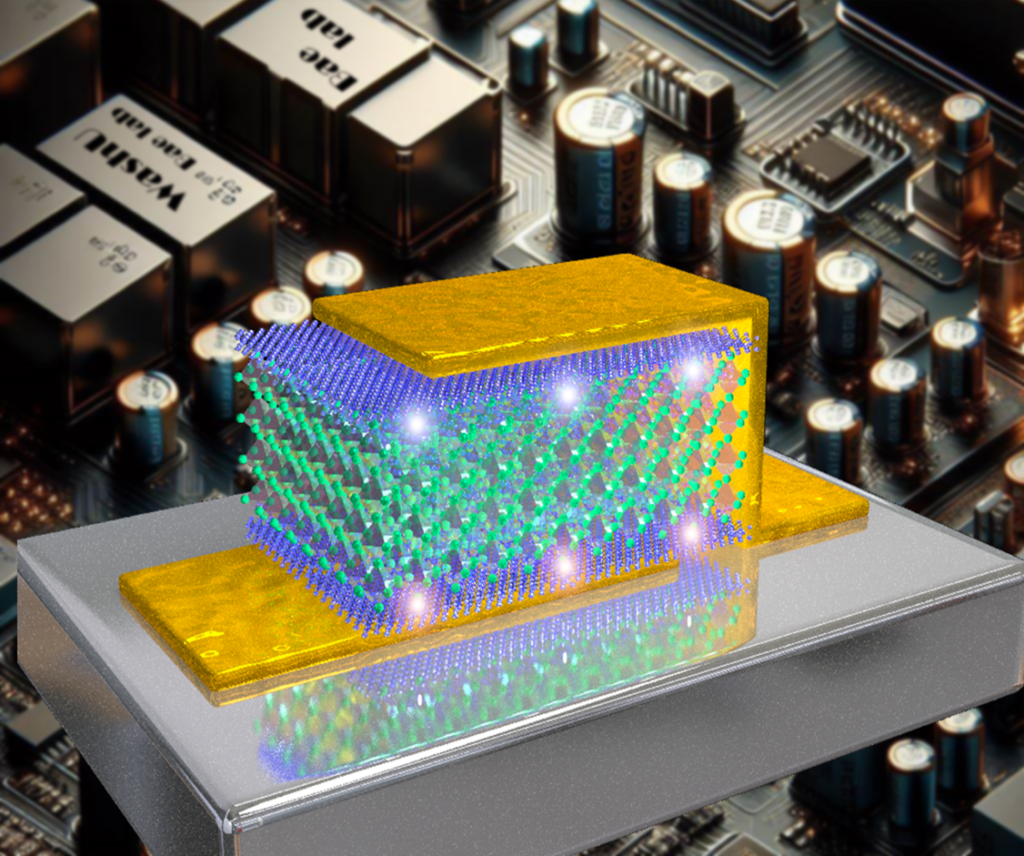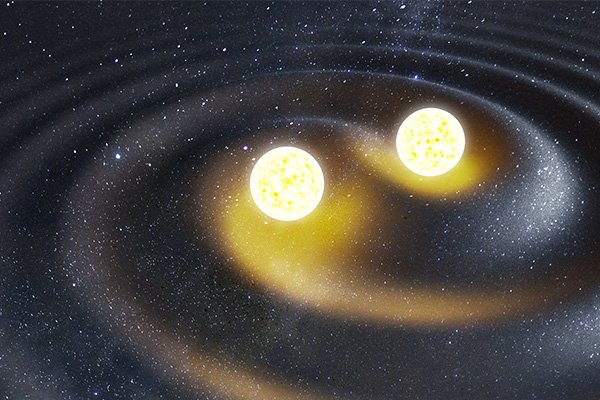2024-04-23 ワシントン大学セントルイス校
 Artificial heterostructures made of freestanding 2D and 3D membranes developed by Sang-Hoon Bae’s lab have an energy density up to 19 times higher than commercially available capacitors. (Image: Bae lab)
Artificial heterostructures made of freestanding 2D and 3D membranes developed by Sang-Hoon Bae’s lab have an energy density up to 19 times higher than commercially available capacitors. (Image: Bae lab)
<関連情報>
- https://source.wustl.edu/2024/04/novel-material-supercharges-innovation-in-electrostatic-energy-storage/
- https://www.science.org/doi/10.1126/science.adl2835
緩和時間変調による人工ヘテロ構造の高エネルギー密度化 High energy density in artificial heterostructures through relaxation time modulation
SANGMOON HAN, JUSTIN S. KIM, EUGENE PARK, YUAN MENG, […], AND SANG-HOON BAE
Science Published:18 Apr 2024
DOI:https://doi.org/10.1126/science.adl2835
Editor’s summary
Avoiding waste heat during capacitor operation is important for improving energy efficiency. Han et al. designed a dielectric heterostructure with barium titanate sandwiched between a two-dimensional material. Charge accumulation at the material interfaces under an alternating electric field changes the relaxation time of the heterostructure. This, in turn, can substantially reduce the energy loss when the right materials are chosen. The authors produced one such structure with high energy density and low loss using two-layer molybdenum disulfide and barium titanate. The general strategy should be useful for refining other dielectric materials. —Brent Grocholski
Abstract
Electrostatic capacitors are foundational components of advanced electronics and high-power electrical systems owing to their ultrafast charging-discharging capability. Ferroelectric materials offer high maximum polarization, but high remnant polarization has hindered their effective deployment in energy storage applications. Previous methodologies have encountered problems because of the deteriorated crystallinity of the ferroelectric materials. We introduce an approach to control the relaxation time using two-dimensional (2D) materials while minimizing energy loss by using 2D/3D/2D heterostructures and preserving the crystallinity of ferroelectric 3D materials. Using this approach, we were able to achieve an energy density of 191.7 joules per cubic centimeter with an efficiency greater than 90%. This precise control over relaxation time holds promise for a wide array of applications and has the potential to accelerate the development of highly efficient energy storage systems.



 個人所属 ランズS-7クーリエ-R582L(超軽量動力機、複座)の事故[墜落](坂東フライングクラブ場外離着陸場、令和4年11月20日発生)](https://tiisys.com/wp-content/uploads/2024/04/furaingukurabu-500x249.jpg)